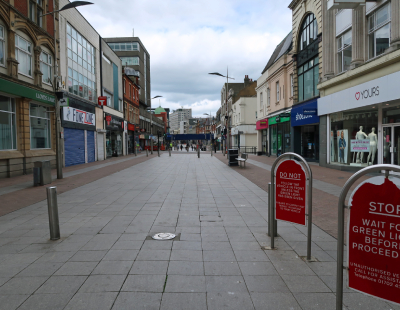Kinleigh Folkard & Hayward (KFH), an independent property services group based in London, recently explored the scale of opportunity for new housing in London’s high streets under the new planning laws.
The coronavirus pandemic has accelerated the home-working trend virtually overnight, especially among office workers. This, coupled with favourable policies to revitalise town centres, could result in the next cyclical phase for our cities, says KFH.
The revival of the high street
The new planning policies, which came into effect in September 2020 along with the Future High Streets Fund, aim to provide a much-needed boost to the supply of new homes by cutting red tape.
It will also contribute to the regeneration of town centres, especially in the outer London zones.
To achieve this, the government has allowed for a wider range of permitted developments rights (PDR) to be introduced, which are considered less costly and time-consuming to build.
In high streets where land is at more of a premium, more emphasis is expected to be placed on ‘airspace’ development, with new homes being added on top of existing buildings.
The report highlights the top 10 town centres in terms of the number of vacant commercial units that have the potential to become residential space, as well as the opportunity at ‘borough’ level. This is quantified by the amount of vacant retail space, vacant non-retail space, 50% of comparison retail space and any department store space present at ‘district’ level town centres.
To estimate the scale of new housing, the amount of possible floorspace for each high street was converted into the number of two-bedroom homes using the average minimum space standards in the Draft New London Plan.
Overall, there is the potential to create 16,117 new homes across the capital, with Croydon, Sutton and Ilford identified as the top three centres for regeneration.
John East, new homes director at KFH, comments: “The Mayor of London and councils need to work together to adapt to new demands from their residents, while at the same time managing the often-conflicting objectives of central government. This includes accelerating new home delivery, rejuvenating the high street and meeting green targets.”
The ’20-minute neighbourhood’
National lockdowns and the growing green movement are fuelling the 20-minute neighbourhood concept, whereby everyday amenities such as shops, schools, workplaces, medical centres, banks, gyms and parks should be within a 20-minute walk or cycle from home.
During the pandemic, the focus has switched to helping residents move safely within their neighbourhood, for example by providing temporary cycle lanes and wider pavements.
With 80% of London residents looking to live in a community with amenities for all ages, KFH says this concept can foster a sense of community and connection to a place. It will also enable residents to socialise locally, support local businesses and enjoy local parks.
East adds: “The legacy of the pandemic could be the renaissance of our local town centres. Many places within inner London are already 20-minute neighbourhoods and this is what makes them highly sought-after.”
“The concept’s popularity is the reason why centres in the capital’s outer zones should embrace this city design narrative, especially as new housing is set to become a key component in the evolution of town centres over the coming years.”
You can view the full KFH report by clicking here.

















Join the conversation
Be the first to comment (please use the comment box below)
Please login to comment